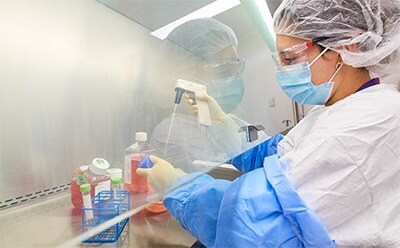Pathogen & Spoilage Testing

Pathogen testing is used to identify pathogenic organisms in manufacturing environments, ingredients or finished products that could harm the consumer. Types of pathogens include specific bacteria strains, viruses, fungi, or parasites that can cause illness in its host. Pathogen testing is continuously performed throughout the production process from raw materials to finished product screening to ensure consumer safety and is subject to strict food safety regulatory guidelines.
Related Technical Articles
- Fast molecular screening of beverage, water, wastewater and food for microorganisms
- Salmonella pass through the entire food chain from animal feed, primary production, and into households or food-service establishments.
- See All (17)
Related Protocols
Find More Articles and Protocols

BIOSAFETY TESTING SERVICES
Biosafety testing services to investigate mAbs and cell and gene therapy and vaccines materials to ensure that they are free of adventitious agents or unexpected results that can cause catastrophic failures in downstream processing, including: Microbiology and Molecular testing.
Pathogen Detection Methods
- Conventional cultivation-based enrichment and plating methods and rapid plating solution
- Ready-to-use media methods
- ELISA and immunoassay technology
- PCR and molecular detection
- Lateral flow tests
Indicator Organisms
While pathogen testing is looking for specific pathogens, indicator organism testing is looking to verify overall sanitation and safety. Microbial indicators are microorganisms that are not necessarily pathogenic but indicate the potential presence of pathogens. Detecting indicator organisms means that the product has been exposed to conditions that could lead to an increased risk of pathogenic contamination. Pathogens can be difficult to detect. Therefore, indicator organism tests are often used as additional methods to assess the hygienic conditions of a product or manufacturing environment.
Microbial Spoilage Testing
Microbial spoilage testing is the process of determining the presence of spoilage microorganisms that cause product deterioration, effecting the quality and safety. These include Gram-positive and Gram-negative bacteria, as well as yeasts and molds. Spoilage microorganisms are not pathogenic, but can change the physical properties, such as texture, smell, taste, and color, or chemical properties of a product and making it unsuitable for consumption. Spoilage can occur at any stage along the food chain and needs to be part of the microbiological quality control. The testing requirements vary from industry to industry, depending on different spoilage parameters.
To continue reading please sign in or create an account.
Don't Have An Account?